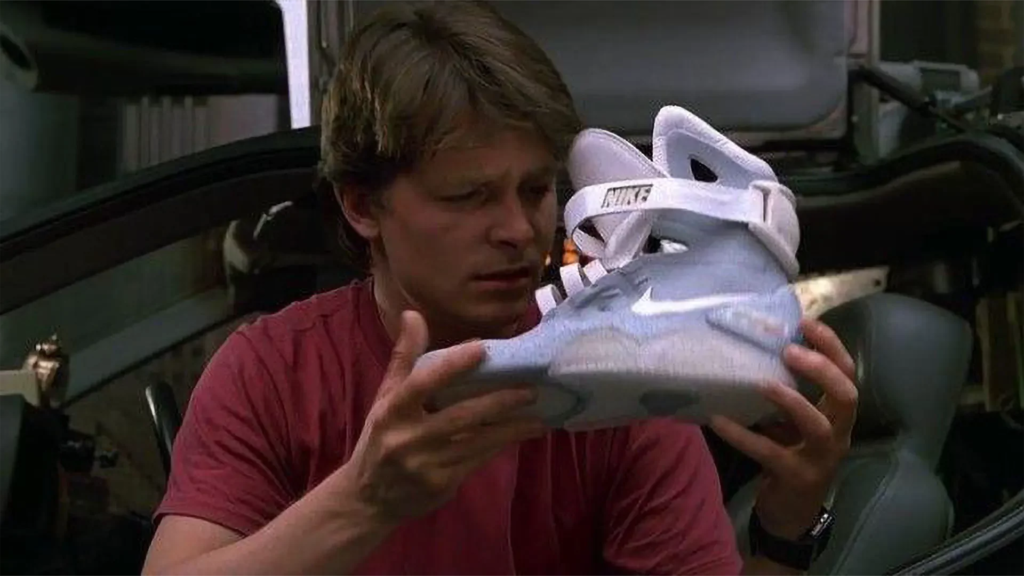
Brands are constantly looking for new ways to excite users and convey their commercial messages more effectively. One such strategy is product placement. What is it all about?
What is product placement
Product placement (or “embedded marketing” or “embedded advertising”) is a form of promotion that consists of showing, mentioning or otherwise highlighting a commercial product within a narrative product (movie, TV series, radio show…) so that it is received by the viewer in an unconscious way.
It is a technique that has really been used for dozens of years and was already present in films of the 1950s-60s. You only have to think of even black-and-white films where you could see a Hollywood actor smoking a Marlboro, complete with a clearly visible pack.
What does traditional brand promotion mean today? Why doesn’t regular advertising work? The consumer today is more aware and demanding; that is why the conventional way of product brand promotion is not enough. Nowadays, marketers are reaching for unconventional marketing tools. This is precisely where product placement comes in.
According to several studies, product placement has a great impact in the recipient of advertising. The product, directly shown, affects on average about 30 percent of viewers.
In addition, if the product is shown near the actor or secondary characters, the effectiveness of the message increases to more than 50 percent. While if the main character uses the product, the visibility goes up to 80%. Really high numbers when compared to other advertisements. This also explains why during our times, advertising done through influencer marketing has a very very high response.
The same research also tells us that if there is a verbal mention within a program or movie (thus without visual impact) 60% of the target audience will notice it.

How much does it cost to do product Placement
Product placement usually takes place for a financial consideration, that is, it is a covert sponsorship performed without the viewers being aware of it from the beginning.
In other cases, the “reward” for the sponsoring company consists of another form of financial return, such as selling its products and services needed for the production of the film.
Unlike conventional advertising, which is presented as such and which viewers take in its true purposes, product placement acts more “sneakily” by reaching out to users when their defenses are down, presenting marketed products as elements of a narrative context.
Generally, the product should stand out but not too blatantly, possibly in a way that is functional to the plot. A product displayed in a way that disturbs the viewer or does not stick in the mind, on the other hand, is not considered effective.
As the July 30, 2004 Decree adopted by the Ministry of Cultural Heritage and Activities clarifies, “The placement of products or brands within films or television programs must integrate into the development of the action, without constituting interruption of the narrative context.”
Product placement is applied in many channels such as movies, TV shows, radio shows, video games, games and events, so that the enjoyment of the entertainment product is not interrupted. It is a more insidious form of indirect advertising, if you will, as it is mixed with other entertainment elements but, unlike these, with a commercial intent.
Product Placement: why did it catch on?
You may be wondering: but why has product placement caught on?
In traditional commercials, the viewer is already prepared to receive advertising messages and therefore knows that he or she will be called upon to decide whether or not the offer is appropriate. For this reason, commercials often do not achieve the desired effects, as viewers either do not pay attention to the advertisements or skip them directly.
In product placement, on the other hand, the user is predisposed to follow the film, TV series or show carefully, and if the product is part of it undoubtedly reaches the viewer.
In these cases, the user identifies the product as a part of the entertainment media, so his judgment of it is “distorted” by the emotions conveyed to him by the narrative.
Obviously, the more the product is presented in a smooth, obvious though not overly placed manner, the more the message goes unnoticed but reaches its destination.
This advertising technique requires larger investments than the other modes, costs that are justified by the returns that can be obtained when entertainment products have high notoriety.
From a certain point of view, product placement acts like native advertising, since it is integrated into the context consulted by the user.
Over the years, this system became established as a real method of increasing film budgets, as companies financed film productions in exchange for the appearance of their products in films.
According to a report by PQMedia, product placement in 2020 reached global value of more than $20 billion!
Nielsen Media Research released a study showing that 58 percent of viewers recognized a brand while viewing a product placement in combination with the commercial, while 47 percent of viewers recognized a brand exposed only to the commercial.
Of course, this study does not show an overall view of the impact of brand placement that brand awareness increases with product placement. But the fact that a brand appears every 3 minutes in prime-time TV shows and media forecast data suggests an annual increase of more than 10 percent of the $8 billion spent globally on brand placement of film and TV products.
Examples of Product Placement.
Forrest Gump drinking 15 bottles of Dr. Pepper or discarding Nikes

- Tom Cruise wearing Ray-Ban glasses in Top Gun

- In Et the Extraterrestrial Spielberg there are in several scenes with Rece’s Pieces candy

- Jurassic World. Watch this video, a trailer made all of Product Placement was created. Had you ever paid attention to it?
At one time this practice was performed in a rather common way, configuring itself as de facto unregulated advertising. Over the years, regulatory interventions (such as the Urbani Decree of July 30, 2004) were developed so that its influence on the viewer would be regulated.
Product placement – The types
Different types of product placement have been developed over the years, evolving in parallel with the entertainment products provided to the public.
- Visual (screen placement): the brand is placed in a highly visible manner for the viewer (this is one of the most effective modes)
- Verbal (script placement): the brand is named by the characters in the story (its effectiveness depends on the context and how it is integrated)
- Integrated (plot placement): unlike the more superficial modes, in this case the product is integrated with the plot of the entertainment channel and becomes part of it if not a real pillar of the story (see “The Devil Wears Prada,” although in this case it is called “title placement” since the product is present in the title)

The integrated formula in particular has evolved in recent years so that it is increasingly perceived as an actual entertainment product rather as a way put in place strictly to advertise a product.
See the “Lego Movie” films that revolve entirely around the use of Lego bricks to build different kinds of artifacts (i.e., the function that is meant to prompt potential customers to buy them) or “Wreck-it Ralph” where characters from video game brands as well as Mentos and Coca Cola are mentioned. And who more than others Toy Story, with its cen.
In some cases, on the other hand, product placement originates after the release of the entertainment product: this is the case with Bertie Bott’s Every Flavor Beans from the Harry Potter films or the novels attributed to the TV character Richard Castle, which were released after an existence only in fiction.
Where product placement is done
Product placement nowadays is done not only in TV series, dramas or children’s TV series, but also in school textbooks.
In France, children can learn techniques for brushing their teeth with images of Colgate materials.
At the moment, the consumer who sees shoes, cars, cell phones and other products of specific brands in TV programs or serials is not surprised and even convinced that this kind of advertising has been paid for by the company that wants to promote its brand.
But product placement in print, especially in books, is a relatively new and rare mode of promotion. Multiple brand placement in the text can be an effective marketing technique that allows consumers to become familiar with the brand embedded in the text and thus become a favorite brand of consumers in the selected product category of other brands. This may subconsciously change the reader’s own thoughts.

Advantages and disadvantages of product placement
Although product placement is an effective marketing communication tool, it is not without its drawbacks. However, numerous advantages that affect the effectiveness of product placement make these negative elements become less visible. Summary of the positive and negative aspects of product placement presented below.
The most important advantages are.
Alternative to traditional forms of advertising, product placement unlike television communication does not affect the interruption of the broadcast. Advertising blocks cause annoyance to viewers.
Credibility of the message: brands presented in films or TV series introduce an atmosphere of authenticity. By seeing the products they know from the real world on the screen, the recipient is gaining trust in the content presented.
The presentation of the brand-product in the audiovisual broadcast takes place in the company of the celebrities who use them. According to the viewer, the actors/sportsmen/television personalities are attractive, so that product also becomes an object of desire.
Low cost and high efficiency: the cost of product placement is much lower than that incurred by the advertiser in the case of television advertising. Companies often have the option of placing the brand in exchange for providing props for the film, which is a minimal cost to them.
Unlimited range: product placement in the film offers the opportunity to reach a wider audience because the film can be seen anywhere in the world. This is attractive to companies that operate globally, because they have the opportunity to reach an international clientele.
The ability to promote products prohibited in classic advertising: product placement creates a space in which manufacturers can present their products prohibited by law in advertising. These include products such as alcohol and tobacco products. Films are extremely attractive to producers of these types of products because they have fewer opportunities in the classic mode of promotion than, for example, food.
Unrestricted access: each audiovisual work appears in different mass media; in the case of films, the first is the cinema, then the Internet, DVD and television. The viewer thus has unlimited access to the image, and the product thus localized can be seen many times.

The disadvantages of this promotional tool include the following
Unpredictable number of clients: it is difficult for producers to predict whether the film or any other work will be successful or not. Careful selection of the cast and a good idea for a script do not guarantee success. It may be the case that using brand positioning incurs costs, but the investment has not been worthwhile.
Bad placement: the reception of product placement depends on screenwriters bringing a brand into the film. If done superficially, producers and sponsors of the video project can have the brand exposed to negative public reviews. In the Internet age, bad reputation spreads very quickly. For example, let’s take a car as a product for positioning. Let’s put the car in scenes where there is a chase and the car manages to catch up with the car in front with great acceleration, this car brand will look like a high-quality product with a high-performance engine. Take another scene with the same car not losing the chase with a car in the same category, the brand will be seen as a brand with low quality and non-performing engines and therefore not trustworthy.
It remains stationary at the moment it is photographed: the introduction of product placement photographs the product at that specific moment. If the product changes visual identification and some external features (logo, packaging, etc.), the image of this product will continue to circulate not updated to the time of fruition.
Limited opportunities for communication differentiation: the situation applies to brands that operate globally. Sometimes a product arrives in different countries under a different name or not at all, which is a kind of limitation that does not allow the full potential of this kind of promotion tool to be exploited.
Low sales effect: product placement performs the functions of branding. Therefore, this tool requires support from other forms of promotion that will induce the consumer to decide to buy.
Lack of control over the life of the product in the film: once identified, the product is in the film forever. It may happen that the product is withdrawn or begins to be positioned differently, thus making its presence in the film obsolete.










+ There are no comments
Add yours